Networking Basics - Certifications - Windows 7 - Windows 8 - Home Network Setup - Wireless Setup :: About - Contact - Search
How to configure Windows 8 IP Settings For Your Home Network
Follow me in this tutorial to configuring the Windows 8 IP Settings.....
1.) Intro >
2.) Network Devices >
3.) Home Network Wiring Cable Modem or DSL Modem>
4.) Home Router Configuration >
5.) Windows Configuration
- Windows XP
- Windows Vista
- Windows 7
- Windows 8 (you are here)
Let's complete the tutorial for setting up a home network. Windows 8 is the newest Operating System of Microsoft.
There are basically two types of IP settings that I will show you how to configure on Windows 8:
- Static IP
- Dynamic IP
When do you use a Static IP?
The point of configuring a static IP is so the network device doesn't change IPs. The DHCP server on the network keeps track of which IP addresses are available and which are in use. When you configure a machine with a static IP, then the DHCP server will ping that IP and know that it is in use before handing it out. If a DHCP server is ready to hand a specific IP and does not receive a ping response, then it will hand out that available IP.
What Devices should you configure with Static IP?
Any device on the network which provides a resource like file sharing, printing etc. should have a static IP. Network devices like servers, routers, switches and printers should all have static IP addresses configured to ensure the users can always communicate with them.
What is a Dynamic IP Address?
This type of IP address is called dynamic because it changes when it's lease is up. The DHCP server hands out an IP address and it has a lease to expire. When it expires, the DHCP server will renew the lease or hand out a new IP address. That's why its not a good idea to have your server configured with a dynamic IP, your users will lose connectivity soon when the IP address changes. Imagine having to go around and change all your computer's IP addresses back to the original?
Let's begin the tutorial about Windows 8 IP Settings......
How to configure Windows 8 with Obtain an IP address automatically?
Windows 8 begins with a new cool looking screen which lets you check your mail, music, videos and many more quick access features. There is one window which you will click to get to the Windows 8 desktop.
1.) Click the desktop (bottom left corner).
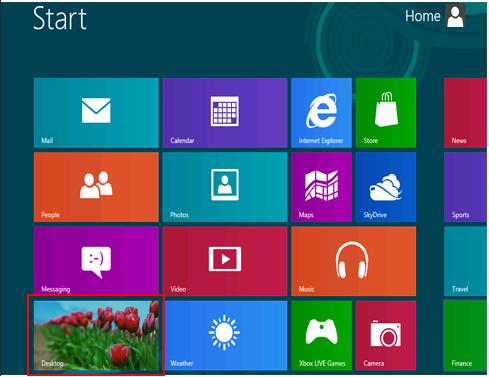
2.) Click the "Windows Explorer" icon in the bottom left corner of the Taskbar.
Windows Explorer window opens. Right-Click "Network" and click "Properties"
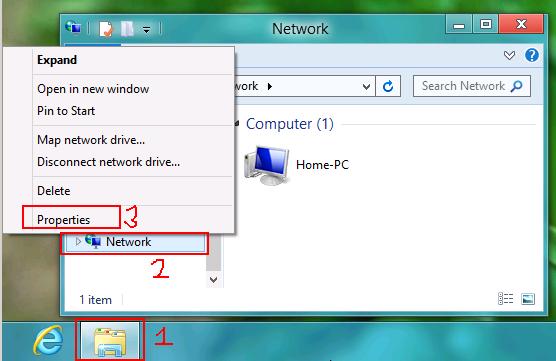
3.) The Network and Sharing Center window opens. Click "Change adapter settings"
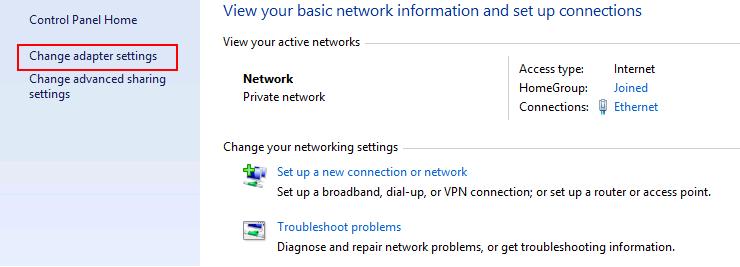
4.) The Network Connections window opens. Right-click "Ethernet" and click "Properties"
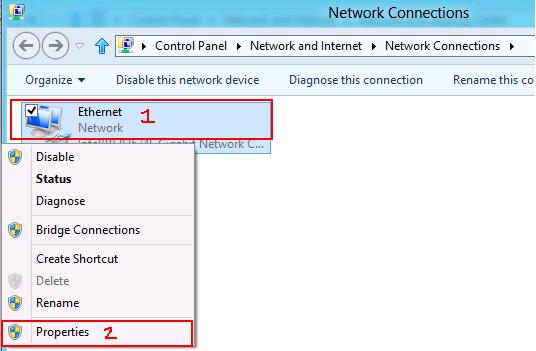
5.) The Ethernet Properties window opens. Click "Internet Protocol Version 4 (TCP/IPv4)" and then click "Properties".
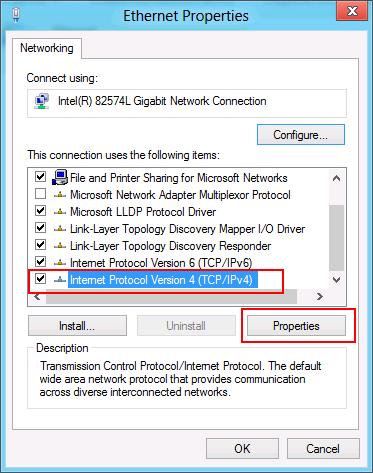
6.) In the next window, make sure "Obtain an IP address automatically" and "Obtain DNS server address automatically" are selected.
Click "OK"
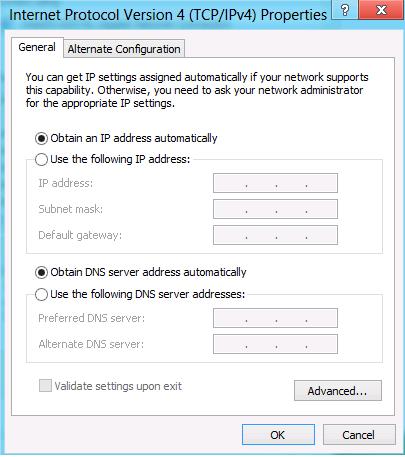
When you set "Obtain an IP address automatically" in the Windows 8 IP Settings, your home router will provide your computer with an IP address. The home router keeps track of which IPs are available and which ones are in use.
How to configure Windows 8 with a static IP?
Windows 8 has a faster way to access the network Ethernet adapter settings to configure an IP Address.
1.) In the bottom right corner of the desktop, right-click the "Network Icon".
2.) Click "Open Network and Sharing Center".

3.) The Network and Sharing Center window opens. Click "Change adapter settings"

4.) The Network Connections window opens. Right-click "Ethernet" and click "Properties"

5.) The Ethernet Properties window opens. Click "Internet Protocol Version 4 (TCP/IPv4)" and then click "Properties".

6.) In the next window, click "Use the following IP address:" and now you can type in the IP address, Subnet Mask and Default gateway that you want for this device on your network.
You can now configure the "Preferred DNS server" and "Alternate DNS server".
Remember if you don't want your device to communicate with the Internet or have access outside of your local network, then leave the "Default Gateway" field empty. This would be a great strategy when you have a home server in which you don't want a hacker from the Internet to access it. A little extra security tip : )
Click "OK" in the current window and "OK" again in the next window.
You have now configured this machine with static Windows 8 IP settings. Test your default gateway by pinging it in the command prompt or going to a website. Your default gateway IP address is usually your local router. This can be your home Linksys router or any other router.
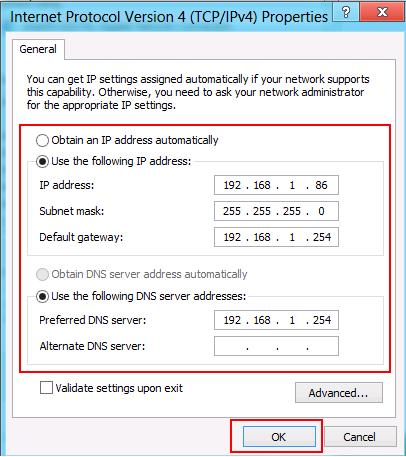
Your Windows 8 PC is now configured with the IP settings.....You have now completed the tutorial for setting up a home network.
Return from Windows 8 IP Settings to Setting up a Home Network
Return from Windows 8 IP Settings to homepage of Computer Networking Success
"Didn't find what you were looking for? Use this search feature to find it."

1













New! Comments
Have your say about what you just read! Leave a comment in the box below.